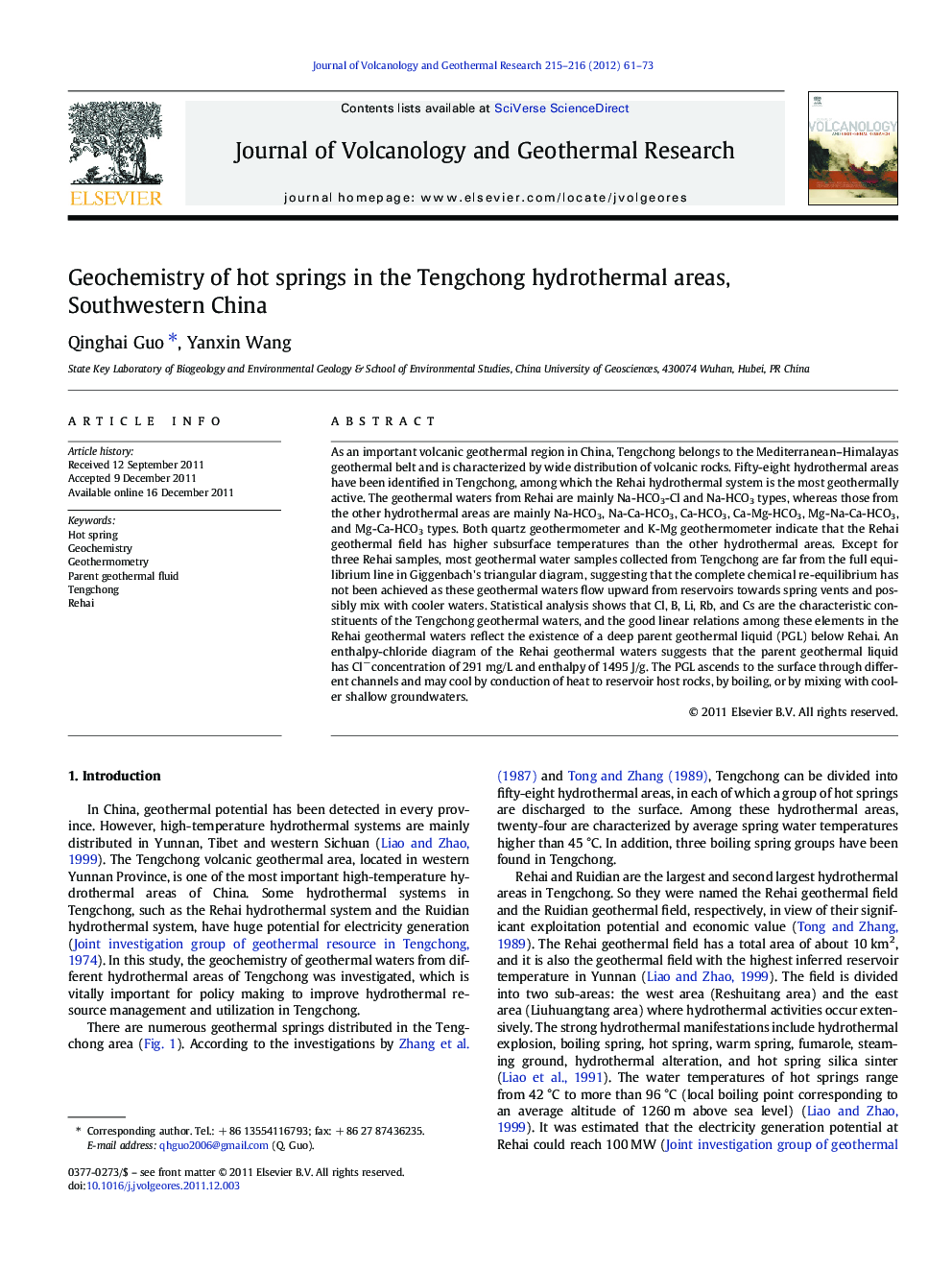| کد مقاله | کد نشریه | سال انتشار | مقاله انگلیسی | نسخه تمام متن |
|---|---|---|---|---|
| 4713837 | 1638389 | 2012 | 13 صفحه PDF | دانلود رایگان |

As an important volcanic geothermal region in China, Tengchong belongs to the Mediterranean–Himalayas geothermal belt and is characterized by wide distribution of volcanic rocks. Fifty-eight hydrothermal areas have been identified in Tengchong, among which the Rehai hydrothermal system is the most geothermally active. The geothermal waters from Rehai are mainly Na-HCO3-Cl and Na-HCO3 types, whereas those from the other hydrothermal areas are mainly Na-HCO3, Na-Ca-HCO3, Ca-HCO3, Ca-Mg-HCO3, Mg-Na-Ca-HCO3, and Mg-Ca-HCO3 types. Both quartz geothermometer and K-Mg geothermometer indicate that the Rehai geothermal field has higher subsurface temperatures than the other hydrothermal areas. Except for three Rehai samples, most geothermal water samples collected from Tengchong are far from the full equilibrium line in Giggenbach's triangular diagram, suggesting that the complete chemical re-equilibrium has not been achieved as these geothermal waters flow upward from reservoirs towards spring vents and possibly mix with cooler waters. Statistical analysis shows that Cl, B, Li, Rb, and Cs are the characteristic constituents of the Tengchong geothermal waters, and the good linear relations among these elements in the Rehai geothermal waters reflect the existence of a deep parent geothermal liquid (PGL) below Rehai. An enthalpy-chloride diagram of the Rehai geothermal waters suggests that the parent geothermal liquid has Cl−concentration of 291 mg/L and enthalpy of 1495 J/g. The PGL ascends to the surface through different channels and may cool by conduction of heat to reservoir host rocks, by boiling, or by mixing with cooler shallow groundwaters.
► Cl, B, Li, Rb, and Cs are characteristic constituents of the Tengchong geothermal waters
► The complete chemical re-equilibrium has not been achieved for most water samples
► Rehai has higher subsurface temperatures than the other hydrothermal areas of Tengchong
► A parent geothermal liquid with Cl−of 291 mg/L and enthalpy of 1495 J/g is present below Rehai
Journal: Journal of Volcanology and Geothermal Research - Volumes 215–216, 15 February 2012, Pages 61–73